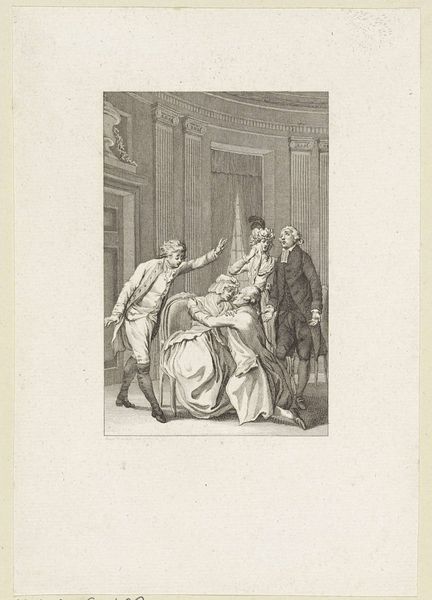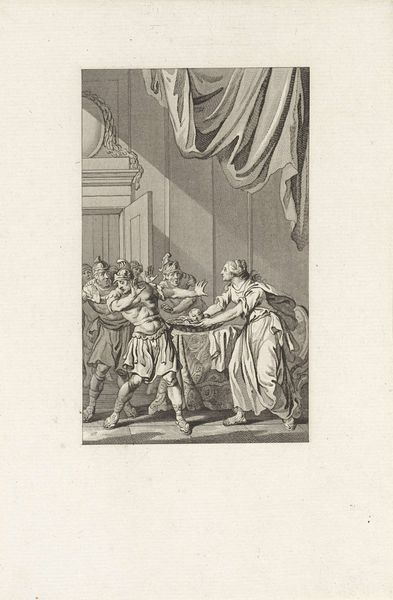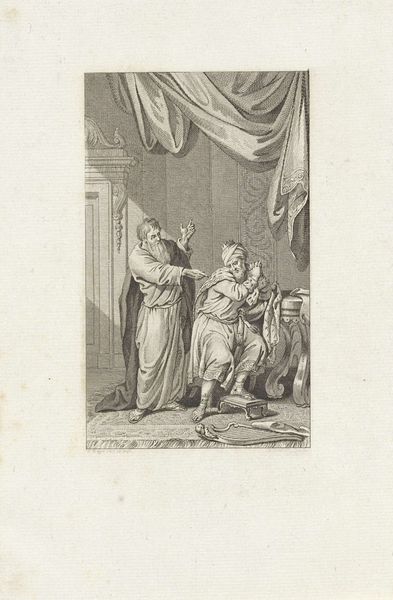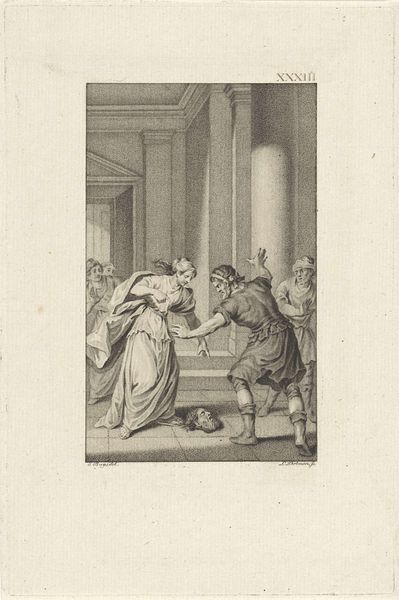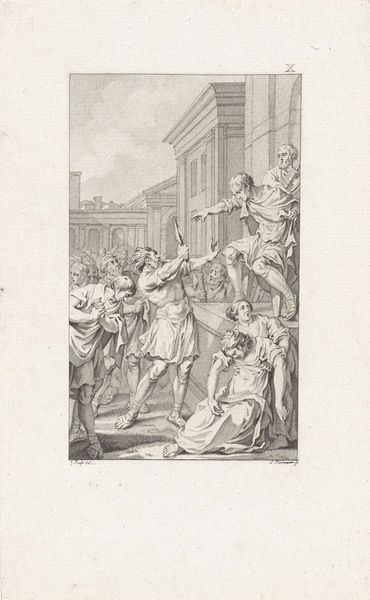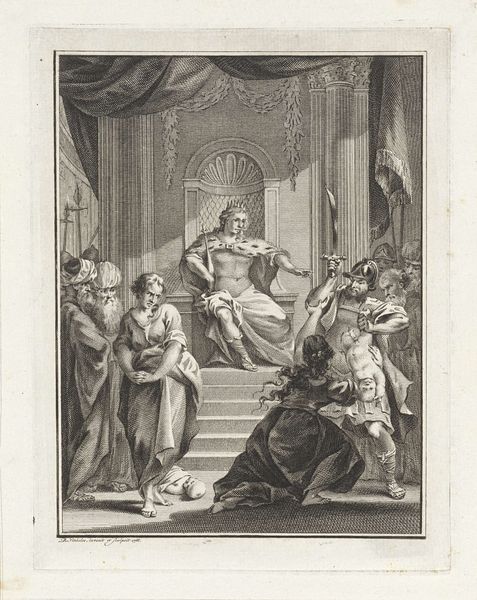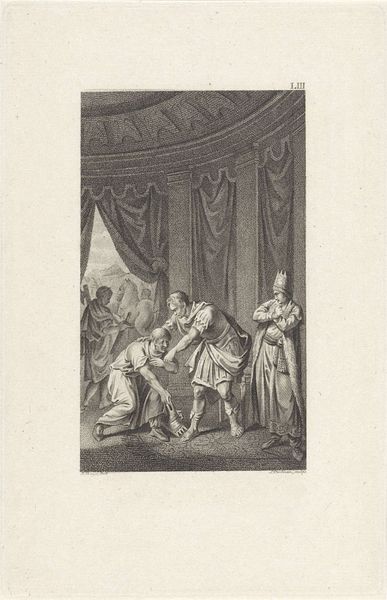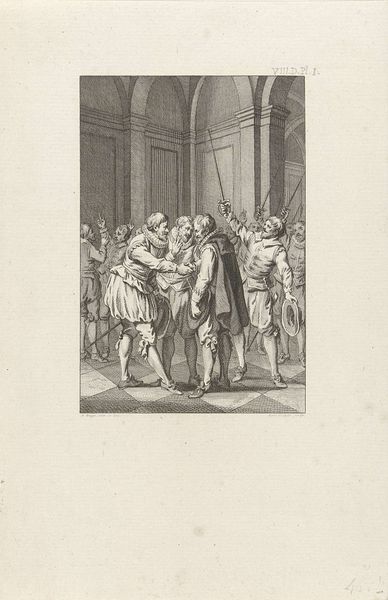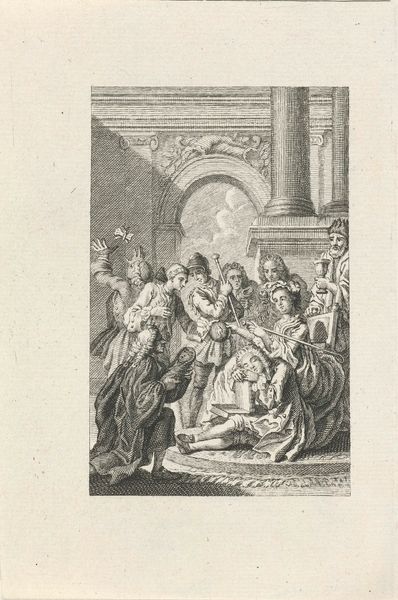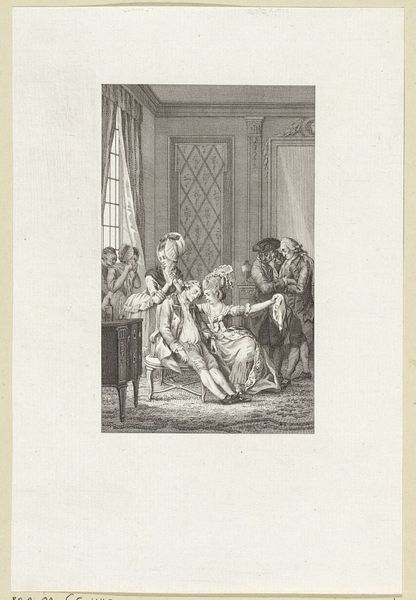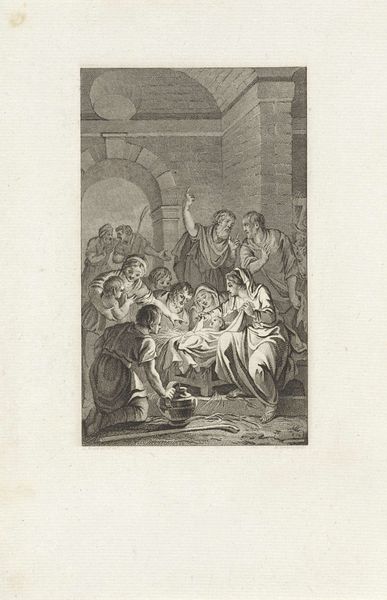
drawing, print, etching, paper, ink, engraving
#
drawing
#
neoclacissism
# print
#
etching
#
old engraving style
#
traditional media
#
paper
#
ink
#
genre-painting
#
history-painting
#
engraving
Dimensions: height 234 mm, width 148 mm
Copyright: Rijks Museum: Open Domain
Editor: This etching, "Vrouw verwelkomt een man op haar knieën," created by Reinier Vinkeles between 1786 and 1791, depicts a rather dramatic scene. The woman kneeling seems to be pleading or welcoming the man, while another woman in the background is clearly upset. It all feels quite staged. What can you tell me about it? Curator: Indeed. This work, firmly rooted in Neoclassicism, presents a highly stylized portrayal of, perhaps, a reconciliation. What strikes me is the use of gesture and posture to convey deeper meanings. Consider the kneeling woman; this posture historically denotes subservience, humility, and a plea for mercy or acceptance. Is she truly welcoming or desperately seeking forgiveness? Editor: That’s a good point. I hadn’t considered the subtext of that posture being potentially negative. How does the other woman fit in, then? She seems to be condemning the whole situation. Curator: Exactly. Her raised hand and severe expression create a counterpoint to the kneeling figure. This introduces a dynamic of conflict – judgment versus supplication. It suggests an emotional tension rooted perhaps in infidelity, family honor, or societal expectation. Do you notice how the men also act as subtle indications? Editor: You’re right. They’re standing in the doorway. Some appear shocked; some seem to be holding back. What does that tell us about the culture back then? Curator: Their varying reactions speak volumes about societal expectations regarding gender roles and morality in the late 18th century. It appears men are expected to mediate, to control, to absorb and regulate the chaotic behaviour on show here. Through the art we might begin to trace and recall some memories of the world back then. What do you think of the artwork? Editor: I appreciate how the artist used these very subtle clues and signals to suggest there’s a bigger, underlying conflict being staged in the composition. Thanks! Curator: My pleasure! Recognizing the symbolic language within art opens our eyes to the values and anxieties of past cultures and our own present day.
Comments
No comments
Be the first to comment and join the conversation on the ultimate creative platform.
